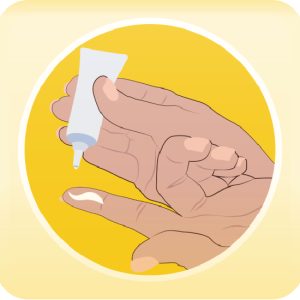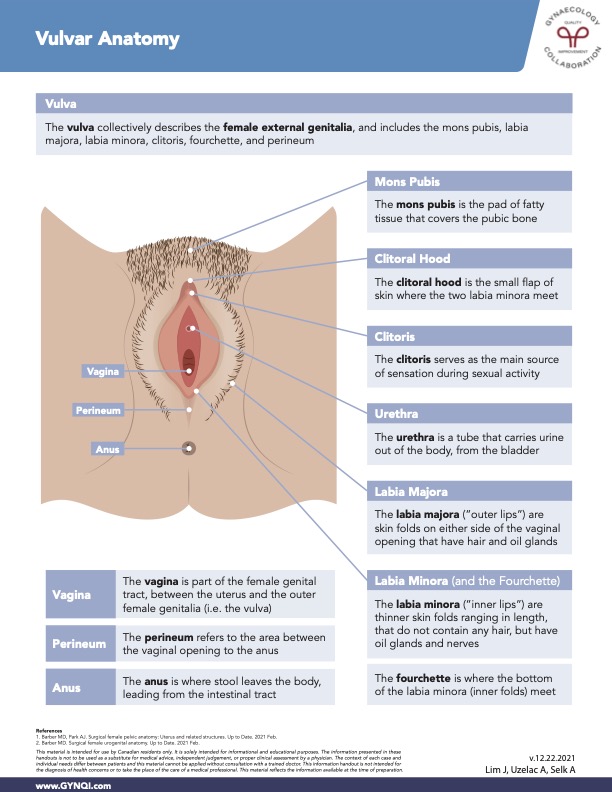
Table of Contents
- Summary
- Mons Pubis
- Clitoral Hood
- Clitoris
- Urethra
- Labia Majora
- Labia Minora
- Fourchette
- Vagina
- Perineum
- Anus
- Like a Well-Oiled Machine
- Frequently Asked Questions
Summary:
- The vulva encompasses the female external genitalia, essential for sexual health and function, highlighting the importance of understanding its components for informed gynaecological advocacy.
- Key structures like the clitoral hood and labia protect sensitive areas and enhance pleasure, while the mons pubis contributes to cushioning and sexual attraction.
- The urethra facilitates urination through coordinated muscle signals, while the vagina serves multiple functions, including sexual pleasure, menstruation and childbirth.
- Each part of the vulva works harmoniously, supporting your overall genitourinary well-being and empowering individuals to take charge of their sexual health.
The vulva refers to the female external genitalia and plays a crucial role in sexual health and function. Understanding the vulva and its parts is essential for advocating for your gynaecological health and addressing any medical concerns.
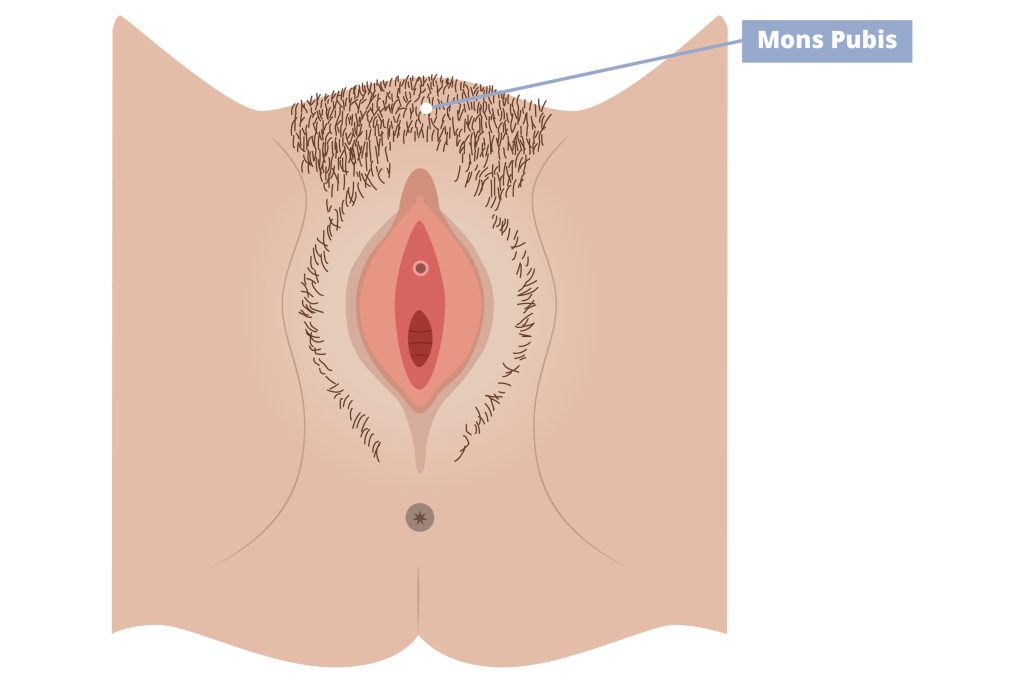
Mons Pubis
The mons pubis is the pad of fatty tissue that covers the pubic bone. Its main function is to provide cushioning during intercourse and is covered with skin and pubic hair. The mons pubis also releases pheromones to induce sexual attraction, through its sebaceous, or oil-secreting, glands.
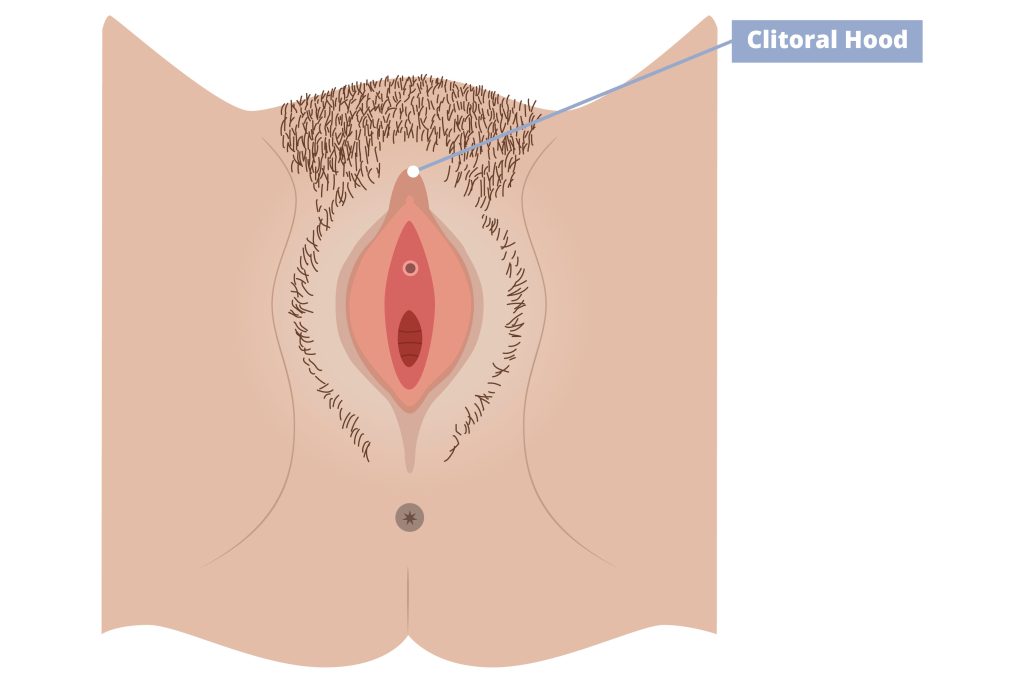
Clitoral Hood
The clitoral hood is the small, delicate flap of skin formed where the two labia minora meet. It serves a vital protective role for the clitoris–without it, your clitoris would be overly sensitive to touch and irritants, like friction from clothing rubbing against it.
The clitoral hood makes a natural lubricant called sebum that helps it glide smoothly over your clitoris, much like the foreskin does for the tip of the penis.
This unique structure is essential for comfort and sensitivity, contributing to your overall sexual health.
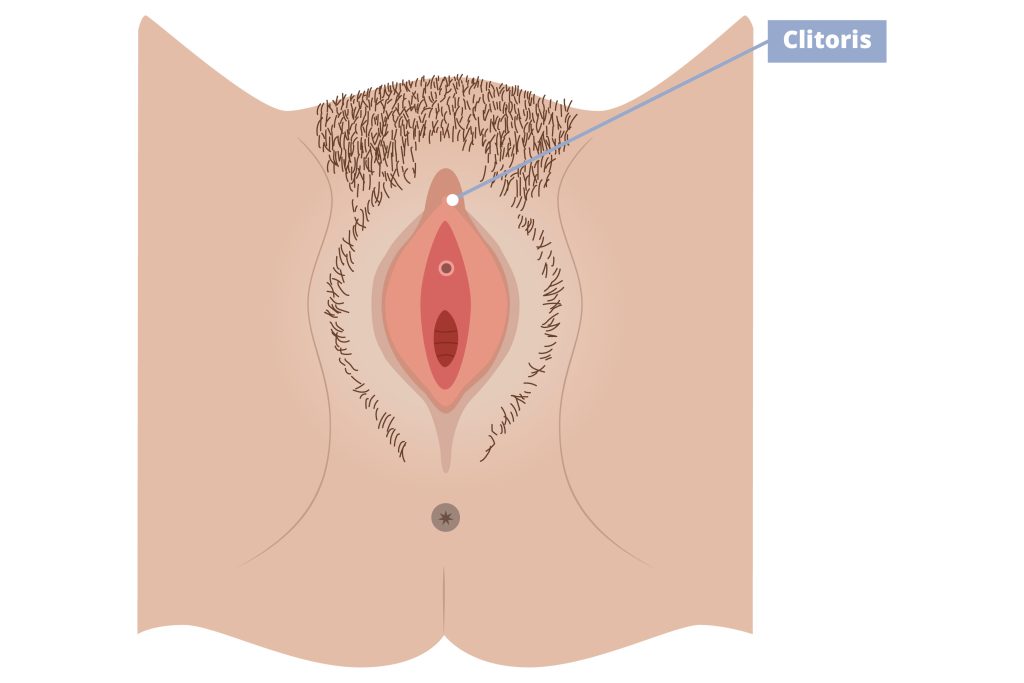
Clitoris
While your vulva is an erogenous zone in its entirety, the clitoris serves as the main source of sensation during sexual activity. It is capable of producing the most intense and pleasurable sexual responses in your body.
The clitoris is sensitive to touch, and the pleasure varies from person to person and depends on the method used. Vaginal penetration can even stimulate your clitoris through your vaginal wall.
Experiment with different types of touch to familiarize yourself with the sensations that feel best for you.
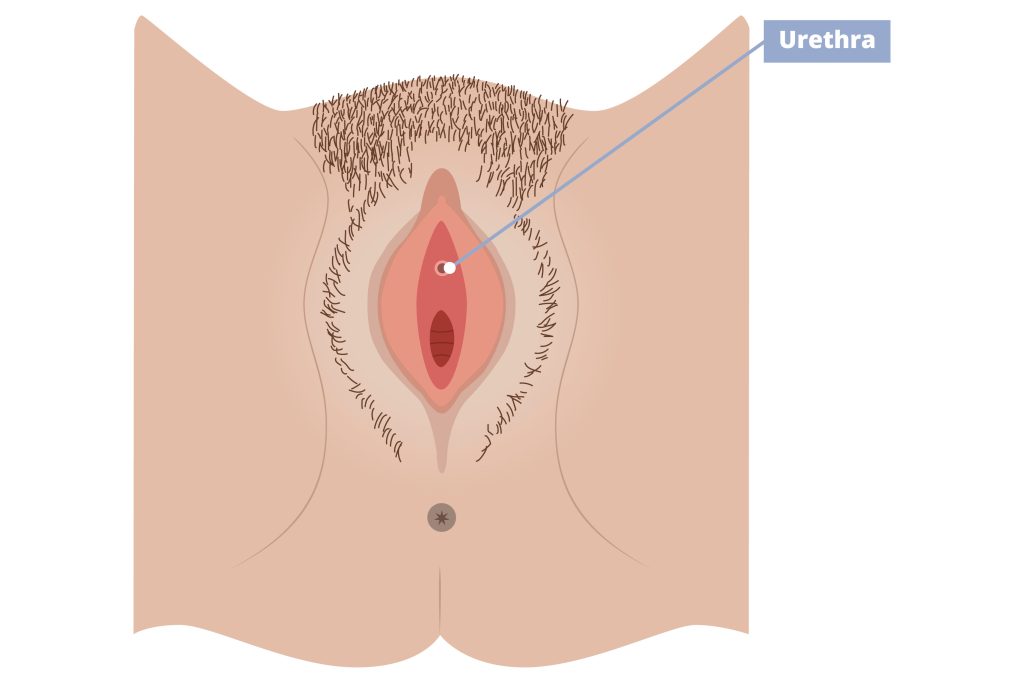
Urethra
The urethra is a tube that carries urine out of the body, from the bladder. When it’s time to urinate, the brain signals the bladder muscles to tighten, which squeezes urine out of the bladder. At the same time, the brain signals the sphincter muscles to relax, allowing the urine to exit the bladder through the urethra. This precise coordination of signals from the brain ensures a smooth and streamlined urination process.
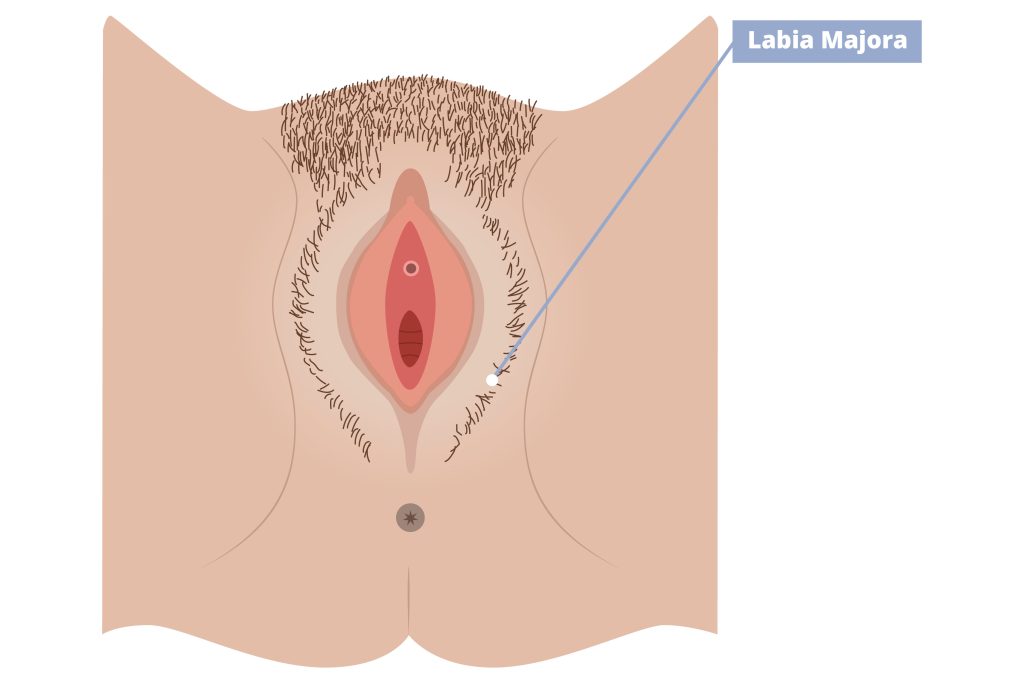
Labia Majora
The labia majora, or the “outer lips”, are skin folds on either side of the vaginal opening that have pubic hair (from puberty onwards). These fleshy folds of tissue protect the external genital organs and have sweat and oil glands that lubricate the vulva, keeping it moist.
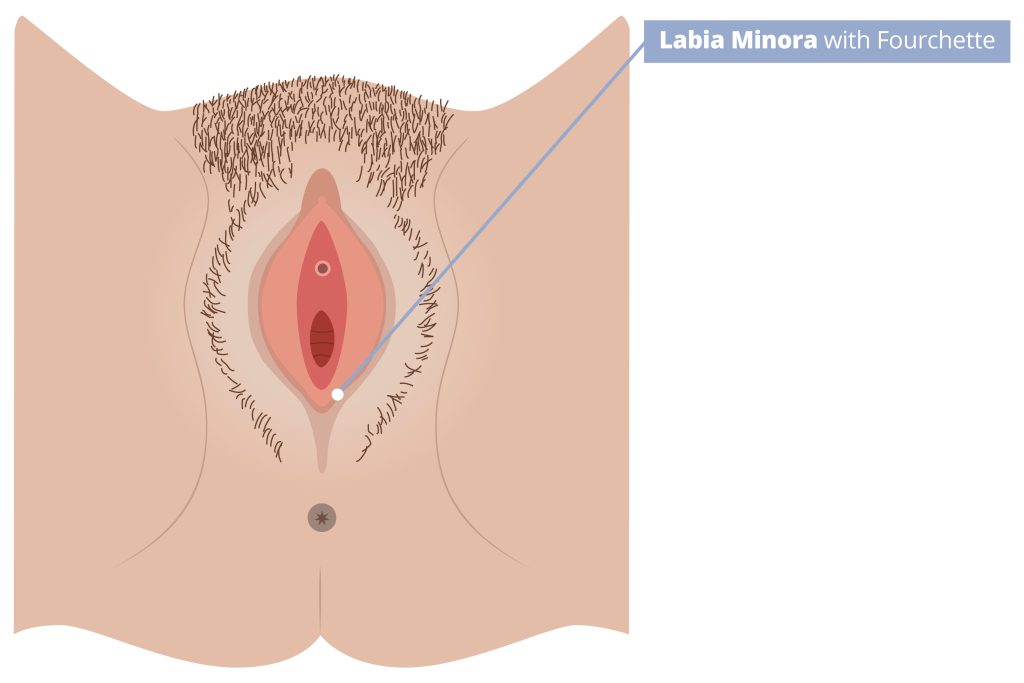
Labia Minora
The labia minora, or “inner lips” are thinner skin folds ranging in length that do not contain any hair. Their main function is to protect the vaginal and urethral openings from dryness, irritation and infections. They also contribute to the lubrication and sexual stimulation of the clitoris during intercourse with their oil glands and nerves.
Fourchette
The fourchette is where the bottom of the labia minora, or inner folds, meet. It is designed to stretch during intercourse and childbirth.

Vagina
The vagina is part of the female genital tract, and lies between the uterus and the outer female genitalia (i.e. the vulva).
There are three main functions of the vagina:
Sexual pleasure: The walls of your vagina contain nerve endings that allow you to feel pleasure when penetrated. It expands and becomes lubricated upon arousal to prevent friction, allowing you to experience pleasure.
Menstruation: Each month during your menstrual cycle, you shed your uterus lining, or endometrium. This lining exits your body through the vagina as menstrual blood.
Pregnancy & Childbirth: Upon ejaculation, sperm swims up from your vagina into your uterus and through the fallopian tubes to fertilize an egg.
During childbirth, the baby passes from the uterus to the vagina, with the vaginal opening being the last step before birth.

Perineum
The perineum is the area between the vaginal opening to the anus. It is one of the erogenous zones of the body and also contains structures within it to help you urinate, deficate, have intercourse, and give birth.
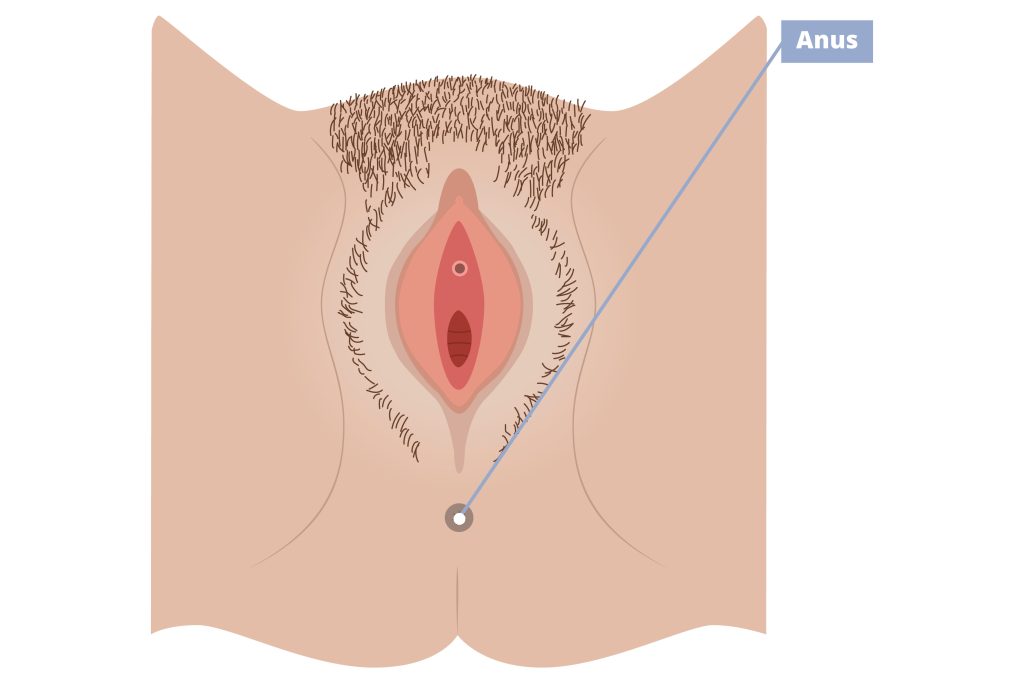
Anus
The last stop of the digestive system, the anus is where stool leaves your body, leading from the intestinal tract. It facilitates your bowel movements like a well-tuned orchestra, letting you know when it’s time to go while giving you the power to hold it in until you find a toilet. Those same nerves and muscles spring into action to gently push the poop out.
The mucous lining in your anus produces a lubrication, ensuring everything glides out smoothly.
Like a Well-Oiled Machine
The vulva is the incredible gateway to female external genitalia, playing a crucial role in sexual health and function. Each part works together in harmony, contributing to both pleasure and overall well-being. By understanding the vulva and its components, you empower yourself to advocate for your gynaecological health.
Frequently Asked Questions About Vulvar Anatomy
How is the vulva different from the vagina?
The vulva and the vagina are connected, but they aren’t the same. The term “vulva” refers to the external female genitalia, like the labia majora, labia minora, clitoris, and vaginal opening. “Vagina” refers to the internal canal that connects the vulva to the cervix and uterus.
What is the main function of the clitoris?
The clitoris is a small, highly sensitive organ located at the top of the vulva where the labia minora meet. It’s located under a flap of skin called the clitoral hood, and contains thousands of nerve endings that play an important role in sexual pleasure.
Only a small part of the clitoris is visible and accessible from outside of the body. The rest extends deeper into your pelvis and forms a larger, complex structure with internal branches.
Why does the appearance of vulvas vary from person to person?
Vulvas come in a wide range of shapes, sizes, and colours. Just like any other part of the body, no two are ever exactly the same. Factors like genetics, age, and hormonal changes can affect the appearance of your vulva, and in most cases, variations like these are completely normal.
Sudden or significant changes to the vulva, like persistent swelling, unusual discolouration, new lumps, sores, or persistent itching, aren’t normal. If you notice any of these changes, let your gynaecologist or physician know right away.
What are common vulvar health concerns to watch for?
The most common vulvar health concerns include:
- Irritation
- Yeast infections
- Redness
- Itching
- Bacterial Vaginosis (BV)
- Vulvodynia (chronic vulvar pain with no clear cause)
- Lichen sclerosus (a skin condition causing white patches, itching, and thinning skin).
If you struggle with any of these issues, let your provider know. There are treatments available to help give you relief and restore your vulvar health.
Can childbirth affect the vulva?
Vaginal delivery can affect the vulva in a number of ways. The process of giving birth can result in stretching or tears, which can lead to swelling, soreness, and scarring as the body heals.
If you’re experiencing vulvar discomfort or pain after giving birth, treatments like pelvic floor therapy can help you feel better and regain confidence. Ask your provider for more information.

